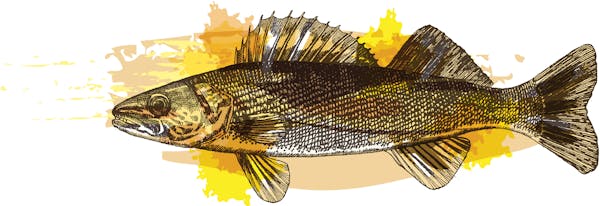When pro Bassmaster angler Greg DiPalma of New Jersey veered into kayak fishing this year, adding a new dimension to his successful career, a small group of Minnesotans noticed.
Joey Vanyo of Northfield, Minn., president of Minnesota Kayak Bass Fishing League, said DiPalma's crossover between traditional bass boat tournaments and emerging kayak competitions is in stride with growth in the sport that he and his collaborators have experienced at "MinnYak.''
In its first three years of existence, the league has attracted about 70 members who can compete for purse money in five core tournaments. The venture is aimed at kayak anglers who are hungry for more intensity after getting their feet wet at friendly, fun-centered fishing outings.
"We saw a demand from anglers who want to compete for cash payouts," said Vanyo, an independent insurance claims adjuster who fishes across the country in competitive kayak tournaments. "We're just at the start of where MinnYak will go."
The group calls itself the state's first official competitive kayak bass fishing league but admits that it pales in size to the Minnesota Kayak Fishing Association, previously formed "as a way for kayak anglers in the Upper Midwest … to share information with each other."
"That's kind of where we all started and it was focused more on the fun side," Vanyo said.
An inside look at MinnYak reveals a new wing of the Minnesota kayak fishing scene — one that has evolved from the sport's pedal- and paddle-powered beginnings to sleek, cutting-edge rigs decked out with specialized electric motors, remote controls and the fishing industry's finest electronics.
Vanyo said his own setup, funded with assistance from professional sponsors, is worth $10,000 to $15,000, an amount that's not uncommon and less than what others spend. At a minimum, league participants spend $5,000 to $8,000 to outfit themselves with the type of equipment needed to compete, he said.
Their flashy kayaks will be on display Aug. 5 in the Twin Cities. Entrants in that weekend's "elite series" tournament will choose to fish in Minneapolis on Bde Maka Ska, Lake of the Isles and lakes nearby, on Lake Phalen in St. Paul, and other lakes. For the first time, Vanyo said, MinnYak is partnering with another kayak tournament promoter, SLAY Nation, to stage the event.
MinnYak Vice President Scott Stuhlmann said new faces keep showing up at MinnYak's events. On average this season, the tournaments are drawing 40 entrants, doubling the size of turnouts during the league's maiden year. The league pays out to the top 10% of finishers in each tourney and its biggest purse to date was $1,289 for first, $645 for second and $387 for third. There's a separate purse for each tourney's biggest bass, based on a separate $10 registration fee for every angler who wants to be eligible.
The winnings increase depending on the number of entrants, and the organizers believe they're on pace to host tournaments in the next couple of years that will draw 75 to 100 kayaks. By then, MinnYak tournaments should be attracting more visitors from out of state than the three to five anglers from North Dakota and Iowa who already enter.
This year's slate of MinnYak competitions started in early June around Madison Lake and Lake Washington in Blue Earth and Le Sueur counties. Two weeks later, the league hosted a tourney on Lake Vermilion, followed by last weekend's competition in the Spicer area, on Lake Koronis. The 2023 season will draw to a close in late September on Lake Minnetonka with a two-day Angler of the Year championship. Entry will be limited to the highest performers during the regular season.
"It's definitely growing," said Stuhlmann, a Duluth resident who also travels nationally to compete in tournaments outside Minnesota.
He noticed at this year's Bassmaster Kayak Series tournament in La Crosse, Wis., that nearly 30 Minnesotans signed up to compete. In previous years, Minnesotans were outnumbered at the event by anglers from Wisconsin and Iowa. "This year we had as many as they did," Stuhlmann said.
The growth in kayak fishing tournaments in Minnesota hasn't gone unnoticed at the Department of Natural Resources. So far in 2023, at least a dozen permits have been drawn, said Jon Hansen, a fisheries management consultant. It's been part of an overall uptick in permitted fishing tournaments that also includes more youth tournaments, Hansen said.
"These fishing kayaks are really cool," he said. "I get why it's expanding."
Kayak owners have a growing assortment of motors to choose from, many powered by lightweight lithium batteries. With special mounting equipment, the motors can be placed up front, in the center, or on the stern. The motors are remote-controlled and capable of spot-locking onto a hot spot using mapping chips and the Global Positioning System. To help find fish, many of the rigs are equipped with forward-facing sonar imaging units that alone cost from $2,000 to $3,000.
Stuhlmann and Vanyo said they've formatted their tournaments with rules similar to national kayak bass fishing series. Competitors are allowed five largemouth or smallmouth bass. Fish are caught, photographed on a preapproved measuring board, and released to reduce fish mortality. The photos are uploaded to a central bank and lengths are calculated to a quarter-inch, from lip to tail. Culling is allowed, meaning the five largest catches by each angler count for total length. Overall winners this year have generally scored higher than 90 total inches — equivalent to what would be an 18- or 20-pound bag. All baits must be artificial.


